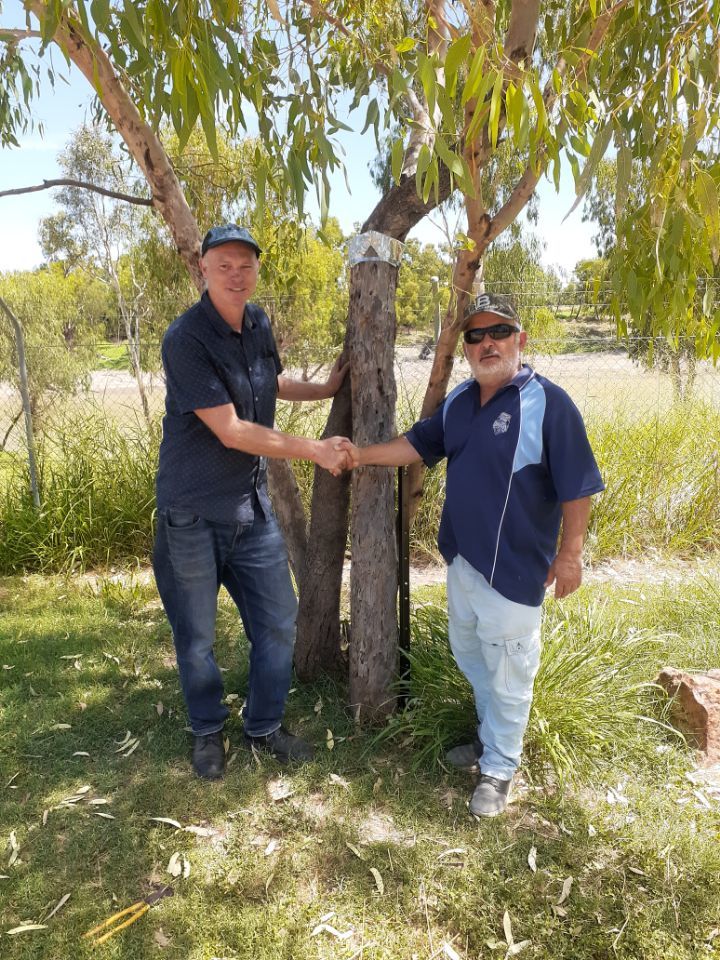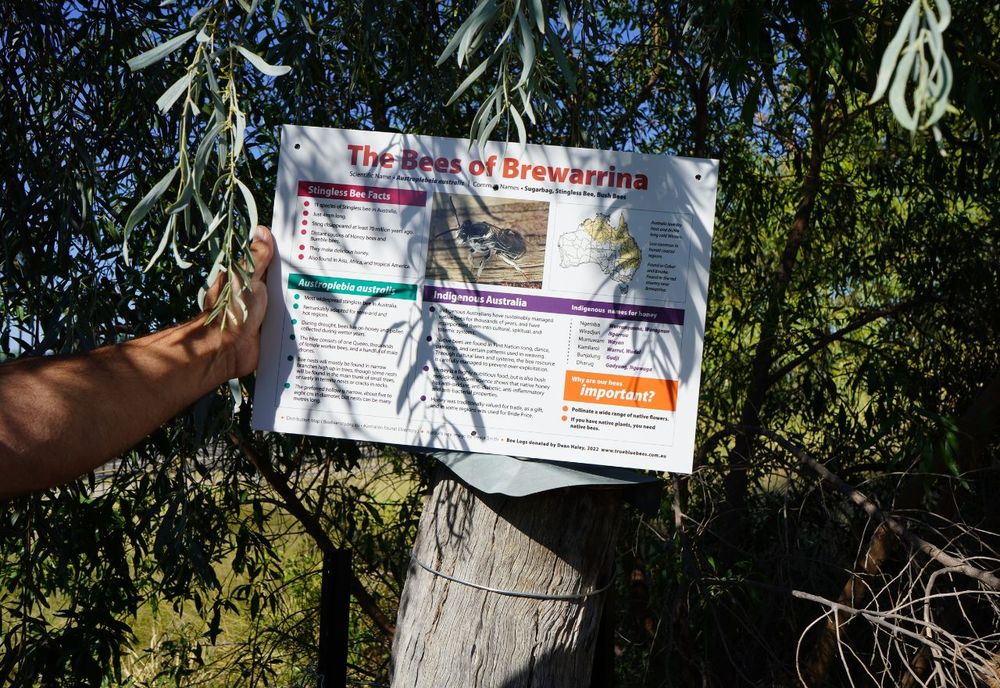Native Bees invited back in Brewarrina
Urayne Warraweena
19 January 2023, 2:40 AM
 Austroplebeia Australis bees
Austroplebeia Australis beesThe Brewarrina Aboriginal Cultural Museum has some new tenants.
Dean Haley, Brisbane Branch President of the Australian Native Bee Association recently installed four established hives of Australian Native Bees on the grounds of the museum.
Dean is a long-term bee-enthusiast and self-published author of the book ‘The Honey of Australian Native Stingless Bees'.
“I was raised on a sheep, wheat, and cattle farm in Gulgong NSW, and one day when I was ten Dad brought home an empty bee box," he said. "We went out in the bush, cut down a tree and soon had a hive of (European) honeybees.
"As a kid, I was fascinated by nature including ants, grasshoppers, bees, and bugs. I don't know why, but the intricacies of their lives filled me with wonder.”
The wonder has never left him and Dean has now brought his extensive knowledge and bee-loved bees to Brewarrina.
“My Mum is from Bre. Mum used to put me and my older sister on a bus most years and send us to Brewarrina for a few weeks of the Christmas holidays, where we would hang out with our cousins, uncles, and aunties," said Dean.
"My uncle Johnnie Steadman told me about native bees and described their nests and habits in considerable detail.
"I later came to learn from books and old newspapers, that native (stingless) bees were naturally found in Brewarrina.
"I was told the museum grounds were originally planted with medicinal and culturally significant plants. The native bees are also culturally significant, and the honey and propolis (the dark wax found in native bee nests) are bush medicine. It seems a natural fit for bush medicine bees to live amongst the plants at the museum.”

ABOVE: Dean Haley and Brad Steadman
“I moved to Brisbane 18 years ago and got my first colony of native bees about 11 years ago. Since then, (with help) I have helped create a native bee community in Brisbane," said Dean.
"I am president of a Brisbane native bee club with over 200 members. A group of us felt the Brisbane club was going so well, we created a national association (Australian Native Bee Association) with about 700 members in multiple clubs.
"I also have my own native bee business (True Blue Bees) and sell beehives and my native bee book.”
The four logs containing Austroplebeia australis bees, and the books donated to the museum are from Dean'scompany, True Blue Bees.
The Australian Native Bee Association (ANBA) has helped by providing fuel money to transport the hives as part of their intention, ratified in their constitution, to "Engage with Indigenous Australians for mutual sharing of knowledge".
Bees are important to nature as pollinators of our plants.
While there are some plants that are wind pollinated and do not need insects, the vast majority do.
The transfer of pollen between plants mixes the genetics, and creates better seeds, more seeds, and bigger healthier fruit.
There is even evidence that having pollinators like bees encourages plants to make more flowers. An often-quoted statistic, is that 3 out of every 5 bites of food we eat, is dependent on pollination.

European bees, those large striped stinging bees that make honey, have been in Australia for 201 years.
While they are good at pollinating imported fruit and vegetables, and love our native Eucalypts, they don't pollinate most native plants well.
In fact, European honeybees do not visit about 80% of our native plants, so to pollinate native plants we need native bees!
Get to know your natives
“I have brought one species of native bee to the cultural museum, called Austroplebeia australis (australis for short)," Dean told the Western Plains App.
"This social, honey producing bee has a Queen, drones, and worker bees. They form a colony and store honey and pollen for use during winter, and during droughts.”
There are many other native bees in Australia including 10 other species of honey producing, social bees, that mostly live in higher rainfall areas.
There are also 2000 species of solitary bees. These bees live by themselves. There is no queen, and no honey, just a single mum raising the kids.
Some of the solitary bees will dig tunnels in dirt to raise their young. Other Solitary bees use grub holes in dead trees as nesting sites.

Having the new residents at the Brewarrina Cultural Museum will be an opportunity to get to know our native bees.
Australia has eleven species of social native bees (genera Tetragonula - previously called Trigona* -- and Austroplebeia).
These bees are mostly black, and they are only 3 to 4 mm long.
They have a queen plus hundreds of sterile female workers and some males in each nest.
Our social native bees are the Stingless Bees, and they usually nest inside hollow trees.
The social native Stingless Bees that produce honey are tropical bees. They are only found in warm areas such as the northern half of Western Australia, the Northern Territory, Queensland, and northern and coastal areas of NSW.
"In Australia it is important to look after the varieties of native bees, to help our native plants," said Dean.
"Dead trees with grub holes, bare dirt, and hollow trees are all important. Having varieties of native bees suitable to your area are important."
He hopes that having the colony in Brewarrina will help people of the region, and visitors, learn to love the local bees.




